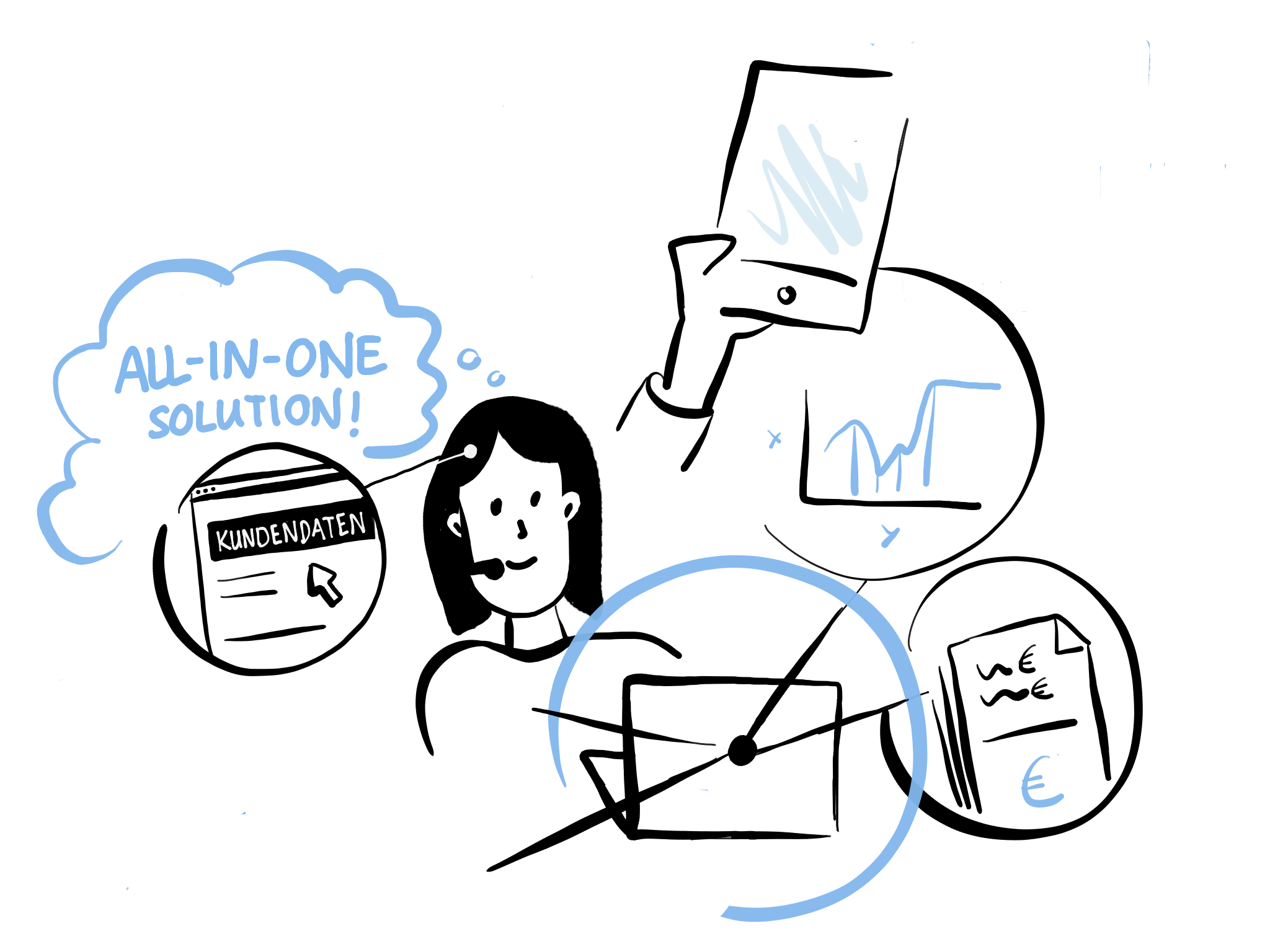
Even in the digital age, stationary retail continues to play an important role. 70% of purchasing decisions are made in front of the shelf. In view of limited shelf space and the customer’s desire for the greatest possible variety, it is important to have the right products in stock in sufficient quantities.
Thanks to integrated, industry-specific processes, field sales staff are able to plan their activities in a more targeted and efficient manner and carry out their visits to stores more quickly and effectively.
Increased customer expectations and accelerated LoB investments in technologies with or without IT involvement
Excessive customization for integration of multiple data sources
No extensible technologies
No true mobile solutions for merchandiser, resulting in additional middleware costs for mobile capabilities and lack of availability of offline capabilities
Possible additional costs for API usage
Lack of ability to place the right product in the right place at the right time due to lack of data in the system
Lack of effectiveness in visit planning
Time-consuming scheduling of visits and high time spent on administrative tasks, for example booking orders, for merchandisers
Lack of ability to forecast product success or sales projections
Lack of ability to create individual product sales plans and monitor discount promotions (trade promotions)

Adaptation of promotional materials to the respective sellers
Informing merchandisers about promotions in specific stores
Ensuring access to the right data
Lack of overview of store performance over time and during a product promotion
Lack of visibility into the success of promotions (measuring the effectiveness of store execution is a top priority)
Lack of ability to leverage best practice business processes at retail level
Non-compliant retail stores
Lack of ability to monitor compliance with product distribution plans (O program, trade promotions)
Low return on investment in brands and advertising
Paper-based and non-integrated systems
Incomplete decision making in distribution
Sales losses and low customer retention
Open architecture for easy and flexible integration of technologies and for extensions if needed
User tools that allow more configuration than custom development
Immediate support for retail merchants through end-2-end processes
Ready to use in as little as four to six weeks
Install database software application platforms without setting up hardware, resulting in low risk and fast payback time
Open APIs, standardized interfaces and protocols, easy expansion
Intelligently managed upgrades, low maintenance and integration overhead
Elimination of data and execution silos
Quarterly release updates with continuous improvement of functionality to meet business needs
Data and privacy protection according to European security and data protection regulations
Optimized visit planning and product placement
Efficient visit execution and order taking
Targeted coaching of sales reps to exceed goals and objectives
Data-driven decision making to increase sales and profits
Accurate salesperson time management to increase sales
Making predictions about which product will be successful, when, and where
Managing distributors in emerging markets
Better visibility of consumer demand at the shelf

Product and customer segmentation
Assortments and listings by chain/superior market
Optimization of visit planning, promotions and product placement in stores
Territory management: proper resource and customer planning
Visit planning and execution
Guided activities for each salesperson (through surveys)
Image intelligence to understand product inventory and replenish in real time as needed
Advanced analytics:
Data-driven decision making to analyze the effectiveness of promotional events
Evaluation of merchandiser visits: What's working? What's not working?
Analytics to test whether customer store coverage is sufficient for each merchandiser
Sales staff should be able to focus on selling during store visits and not spend unnecessary time planning and gathering information. SAP Sales Cloud supports this with various planning and preparation functions:
Configurable activity plans
Increase productivity with custom and personalized activity plans for each campaign. With easy access to tasks, surveys, and promotional documents, sales reps can focus on the right activities per store.
Route and visit optimization
View, search, and filter store locations based on visit frequency, history, priority, account classification, or other criteria
Comprehensive map and calendar view
Compressed view with maps and calendar for optimizing route plans
SAP Sales Cloud enables sales reps to use their time efficiently during store visits, make faster decisions, and improve sales efficiency.
Check-in and check-out of geo-locations
Improved visit effectiveness by making it easier to track sales rep time spent in each store and validate tasks using surveys
Product and promotional audits
Verify product presentation, visibility and availability with the Imaging Intelligence add-on for SAP Sales Cloud. This creates the ability to capture images in the store, compare them in real time to the desired merchandising configuration, and take corrective action based on predefined rules and a highlighted realogram.
360-degree visibility of the store
View details and follow-up items from previous visits. Using an intuitive, game-like interface, sales reps can take notes, capture images for later analysis, and gather competitive intelligence.
Quotes, orders, and service tickets
Generate quotes, purchase orders, and service tickets, create follow-up documentation, and capture binding electronic signatures
Account-specific product lists and back-office connectivity
Quickly and easily order and replenish using product lists, previously billed revenue, and order histories by account to identify and maintain the right product assortment
Online and offline support for mobile devices
Responsive user interface using any mobile device – even offline
Real-time data and analytics can completely transform the way sales reps engage with retailers, as well as pricing, promotion, and placement decisions. SAP Sales Cloud provides real-time insights into key performance data, monitoring of business trends and understanding of buying patterns, and analysis of KPIs to better inform on-the-spot decisions.
Productivity and completion analysis with tasks and surveys
Monitoring and evaluation of time spent in the store, analysis of KPIs such as sales and completion of activities
Store monitoring
Evaluate and compare multiple stores, analyze trends in store performance using photo data, generate reports on shelf share, assortment share, and out-of-stock items, and then develop actions to improve store and sales performance
Competitive product pricing
Real-time insight into products and prices
Measurement of sales performance
Effective sales controlling of required KPIs
Deliver the right products at the right time and at the right price.
Maximize sales through increased availability on the shelf.
Conduct your visits to the store smoothly.
Simplify data, processes and decisions to maximize the efficiency of your work.
Improve the shopping experience for customers.
Simply complete the form and submit it. We will get back to you as soon as possible.

Leading companies from various industries rely on SAP Sales Cloud. With this solution, you digitize your sales processes and benefit from a fast, cost-effective implementation.

The close integration of SAP Sales Cloud and SAP ERP simplifies and accelerates sales processes in the company. Our Administration Package for SAP Sales Cloud is the ideal solution to fix faulty integrations. It allows full flexibility in maintaining customer-specific scenarios outside the standard.

With the connection of SAP Customer Experience to the on-premise solutions of SAP CRM, SAP ERP, and SAP S/4HANA you benefit from uni-/bi-directional synchronization of your master data, full integration of transactional scenarios, and integration of field service and support.